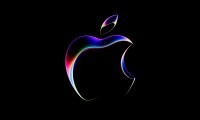It’s Apple’s big day today as its World Wide Developers Conference, or WWDC, kicks off in San Jose. The annual meetup is, of course, focused more on the folks that write software that works on the many branches of Apple’s product lines, and not so much on hardware, but there is some expectation that Tim Cook and company could roll out a Siri-based smart home hub to compete with Amazon’s Alexa.
Other highlights should include a preview of iOS 11, which runs iPhone and iPads. The folks at Bloomberg say the next version of the mobile-focused OS may include some significant visual tweaks, and BGR says a new app called “Files” that only runs on iOS 11 has popped up on the App Store, and it may give users more MacOS-like access to all the stuff stored on our iPhones and iPads. That would be cool.
We’ll have a full wrap-up of all the WWDC action later today, so hit this link for the latest updates.
All your chips belong to…
Speaking of Apple, it looks like the company is about to flex some financial muscle and is also partnering up with an unexpected rival to take control of an important piece of tech manufacturing: a chip maker.
Multiple sources say Apple, Amazon, Sharp and Apple’s primary gadget assembly partner, Foxconn, are teaming up to buy Toshiba’s NAND memory chip facilities, which will operate under the Foxconn banner if the deal goes through. But it’s no slam dunk: the Japanese government is reportedly opposed to handing over the company to a Chinese entity – Foxconn – even if Apple and Amazon are involved.
So far, Toshiba has rejected a $27 billion bid from Foxconn, so it’s unclear what the tipping point in terms of money might be, and there will likely be management deals to contend with as well. Bidding is due to wrap up this month.
Who counts all those transistors?
Hey, it’s time to get small. Remember how not too long ago, computer chip makers were desperate to overcome manufacturing barriers that were keeping them from making chips in the 32-nanometer class? Ha, good times, as IBM just announced they have successfully produced chips at the 5-nanometer level.
A little computer chip 101 here: the smaller you can make the transistors on a computer chip, the more you can cram into a given amount of space, increasing memory density, performance and speed. But of course, it’s not easy: we’re talking about working at molecular scales and sizes that make human hairs look like mega-structures.
IBM says their 5-nanometer design gives a 40-percent performance boost over a competitor’s 10-nanometer chips, and they can now squeeze 30 billion transistors onto a chip about the size of your fingernail. Oh, and they also say they can make the process work at the 3-nanometer level, so hey, much more to come.
We’ve got more news on our Facebook page and YouTube channel, and be sure to tune in to this week’s DT podcasts: Close to the Metal (computers and such) on Tuesday, Trends with Benefits (general tech shenanigans) on Thursdays, and Between the Streams (movie and TV topics) every Friday.



